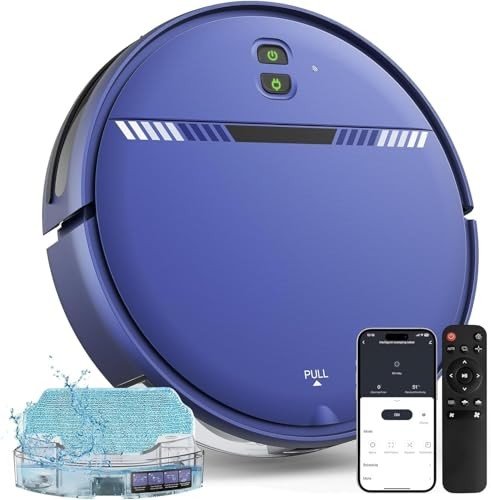The Rise of Robot Vacuum Cleaners in Industrial Settings
Recently, the landscape of industrial cleaning has seen a substantial transformation with the intro of robot vacuum. These automated gadgets are not simply a novelty for homes; they have gotten traction in warehouses, manufacturing plants, and other industrial environments. This short article checks out the functionality, advantages, and factors to consider of robot vacuum cleaners within the industrial context, while responding to some frequently asked concerns.
What are Robot Vacuum Cleaners?
Robot vacuum are automated cleaning gadgets equipped with innovative sensors and innovation that allow them to browse around spaces, detect dirt, and vacuum surfaces without direct human intervention. In industrial settings, they are designed to handle a variety of debris types, facilitate regular cleaning schedules, and improve overall functional effectiveness.
Table 1: Key Features of Industrial Robot Vacuum Cleaners
| Function | Description |
|---|---|
| Navigation | Uses LiDAR or camera-based navigation for accurate mapping. |
| Size and Design | Compact and robust style to suit tight spaces and hold up against tough environments. |
| Self-Charging | Immediately go back to its docking station for charging. |
| Dustbin Capacity | Larger dustbin suited for industrial debris sizes and volumes. |
| Shows | Can be configured for scheduling and specific cleaning tasks. |
| Data Collecting | Geared up with sensors to collect information for upkeep and cleaning analysis. |
Advantages of Robot Vacuum Cleaners in Industrial Settings
The adoption of robot vacuum comes with a myriad of advantages:
Increased Efficiency:
- 24/7 Operation: Unlike human cleaners, robots can run all the time, contributing to constant cleanliness without downtime.
- Time-Saving: Automated cleaning permits workers to concentrate on core tasks rather than cleaning tasks.
Cost Savings:
- Labor Costs: Maintaining a robot vacuum can minimize the need for a large cleaning staff, lowering general labor costs.
- Operational Efficiency: With enhanced cleanliness and minimized downtime due to upkeep problems, organizations can conserve on operational costs.
Improved Safety:
- Reduced Risk: By reducing the human involvement in harmful cleaning environments, the threat of accidents is minimized.
- Constant Cleaning: Robot vacuums ensure that locations are consistently cleaned, reducing slip dangers and unhealthy environments.
Increased Flexibility:
- Customizable Cleaning Routes: These makers can be set to tidy specific locations or floors, adjusting to altering industrial layouts.
- Range of Surfaces: Industrial robot vacuums can deal with various flooring types, from concrete to tiles, making them flexible.
Ecological Impact:
- Sustainable Cleaning Solutions: Many models utilize minimal water and environmentally friendly cleaning services, aiding in corporate sustainability efforts.
Table 2: Industrial Applications of Robot Vacuum Cleaners
| Market | Application |
|---|---|
| Production | Cleaning production lines and assembly locations. |
| Warehousing | Preserving tidy and orderly storage areas. |
| Food Processing | Guaranteeing tidiness in sensitive areas to fulfill health standards. |
| Pharmaceuticals | Preserving ultra-clean environments for production. |
| Logistics and Distribution | Keeping pathways clear for efficient operation. |
Obstacles and Considerations
While the advantages are considerable, organizations ought to also consider a number of obstacles:
- Initial Investment: The in advance costs of buying industrial robot vacuum cleaners can be considerable, though long-lasting cost savings might offset this expenditure.
- Upkeep and Repairs: Regular maintenance is important to keep the robotic systems operating optimally, and repairs can incur extra costs.
- Combination: Businesses might require to integrate these makers into existing workflows, which can require time and adjustment.
- Training and Support: Staff may need training to efficiently handle these machines, particularly when fixing or programs is needed.
Frequently Asked Questions About Robot Vacuum Cleaners in Industrial Settings
1. Just how much do industrial robot vacuum cost?
The expense can range from a few thousand to tens of thousands of dollars, depending on specifications, features, and brand name.
2. What types of surfaces can they clean up?
Robot vacuum cleaners are appropriate for numerous surface areas including carpets, tiles, concrete, and even some wood floorings.
3. How do they browse complex industrial environments?
Many industrial robot vacuums use advanced navigation systems like LiDAR, electronic cameras, and sensing units to draw up and adjust to their environments for efficient cleaning.
4. Can they clean up large locations without human intervention?
Yes, industrial robot vacuums are created to tidy substantial locations with pre-programmed paths and schedules, effectively operating autonomously.
5. Are these robots eco-friendly?
Lots of models focus on effectiveness and lower water usage, making them a more environmentally friendly cleaning choice compared to standard techniques.
The introduction of robot vacuum cleaners into industrial environments represents a remarkable development in cleaning innovation. With their ability to boost effectiveness, decrease labor costs, and keep safety, these automated systems are paving the way for smarter and cleaner industrial operations. While difficulties may exist, the long-term advantages and technological developments are encouraging for industries looking for to enhance their cleaning procedures. As robotic vacuum cleaners continues to develop, we can expect further developments in robot vacuum cleaners that will transform industrial cleaning practices a lot more.

